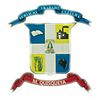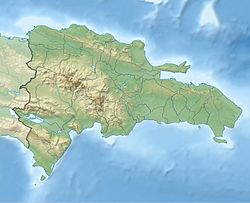Quisqueya, Dominican Republic facts for kids
Quick facts for kids
Quisqueya
|
||
|---|---|---|
|
||
| Country | ||
| Province | San Pedro de Macorís | |
| Established as a Municipality | September 19, 1996 | |
| Area | ||
| • Total | 155.45 km2 (60.02 sq mi) | |
| Population
(2012)
|
||
| • Total | 24,885 | |
| • Density | 160.084/km2 (414.615/sq mi) | |
| Municipal Districts | 0 |
|
Quisqueya is a special kind of town called a municipality in the Dominican Republic. It is located within the San Pedro de Macorís province. Think of a municipality as a local government area, similar to a city or a large town, that manages its own services.
Contents
What is a Municipality?
A municipality is a region or town that has its own local government. This government helps manage things like public services, roads, and local rules. In the Dominican Republic, municipalities are important parts of how the country is organized. They help make sure local communities have what they need.
Where is Quisqueya Located?
Quisqueya is found in the eastern part of the Dominican Republic. This country is on the island of Hispaniola, in the Caribbean Sea. The province of San Pedro de Macorís is known for its beautiful coastal areas and important sugar cane farms. Quisqueya is part of this vibrant region.
Geography and Size
The municipality of Quisqueya covers an area of about 155.45 square kilometers. To give you an idea, that's roughly the size of a medium-sized city. It's a place where many people live and work, contributing to the local economy and culture.
History of Quisqueya
Quisqueya became an official municipality on September 19, 1996. Before this, it might have been a smaller town or a district within a larger area. Becoming a municipality means it gained more control over its own affairs and development. This was an important step for the community.
People and Life in Quisqueya
As of 2012, about 24,885 people lived in Quisqueya. The people here contribute to the unique culture of the Dominican Republic. Life in Quisqueya, like many places in the Dominican Republic, often involves a mix of traditional customs and modern influences.
Local Economy
The economy of Quisqueya is likely influenced by the surrounding San Pedro de Macorís province. This area is historically known for its agriculture, especially sugar cane. Local businesses and services also play a big role in providing jobs and supporting the community.
See also
- list of municipalities and municipal districts of the Dominican Republic
 In Spanish: Quisqueya (municipio) para niños
In Spanish: Quisqueya (municipio) para niños



